Humans have long studied the nights sky and discovered the worlds of Mercury, Venus, Mars, Jupiter, Saturn, Uranus and Neptune.
But beyond this realm of knowledge, another world shines brightly, just waiting to be discovered.
Planet 9 is not the first celestial body predicted by mathematicians before its visual verification, but pinpointing its precise location has taken a long time.
After 10 years of speculation we were finally able to send Gallivanter on its way to reveal Planet 9's secrets.
In its swift flyby our little probe sent back more data than we could ever have hoped for.
Lets take a look at its findings.


641.000 km from Planet 9's Surface
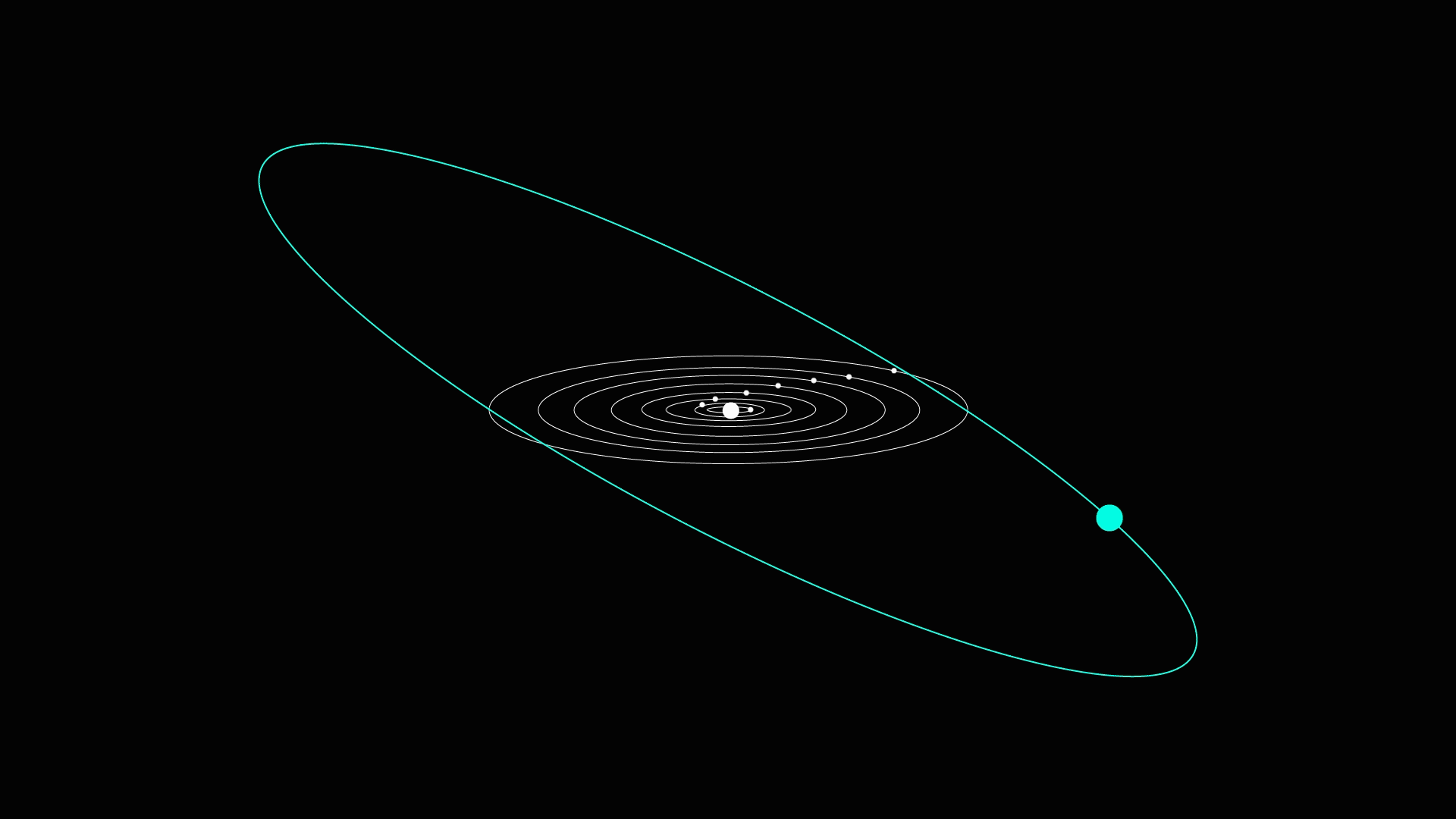
Planet 9 is the ninth planet from the Sun.
At about 100 times the distance between our star and the Earth, or 100
astronomical units, Planet 9 is the most distant planet in our Solar System.
This distance creates the longest orbit of the nine worlds, about 10.000 years,
with the seasons lasting little over 2500 Earth years each.
Theoretically, a human living on Planet 9 would experience only one seasons in
his entire life, each season lasting for about 100 generations.


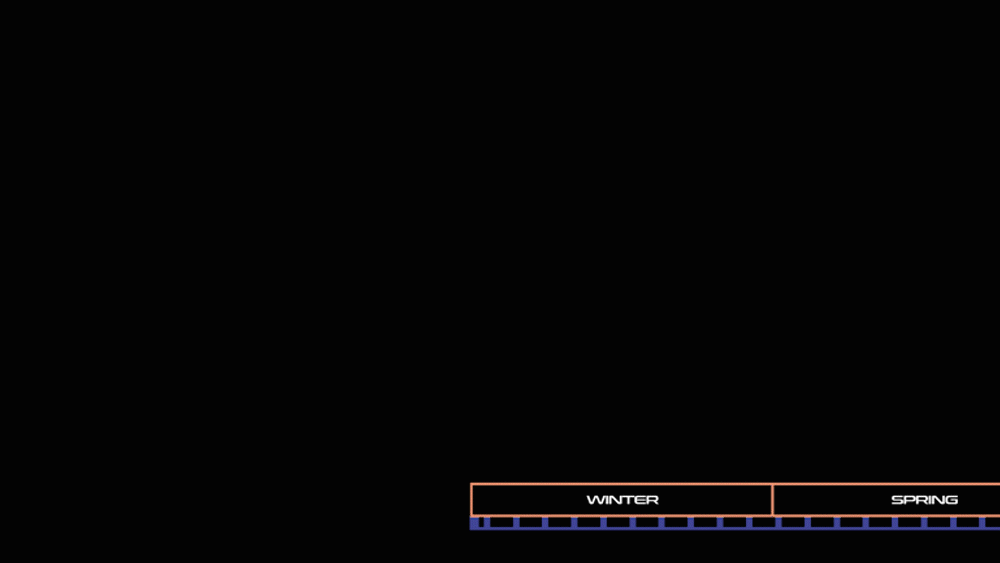

The planet is tilted at a near right angle, in which polar regions point toward
and away from the Sun, rather than upward and downward.
This tilt, thought to be the result of Planet 9's collision with at least one celestial body,
has also affected the orientation of Planet 9's 13 rings and 79 known moons.
Unlike the rings and moons of other worlds, which orbit their home planets horizontally,
those of Planet 9 orbit in a vertical orientation along the planet's tilted equator,
much like a Ferris wheel.


Planet 9's Rings and Moons
586.782 km from Planet 9's Surface
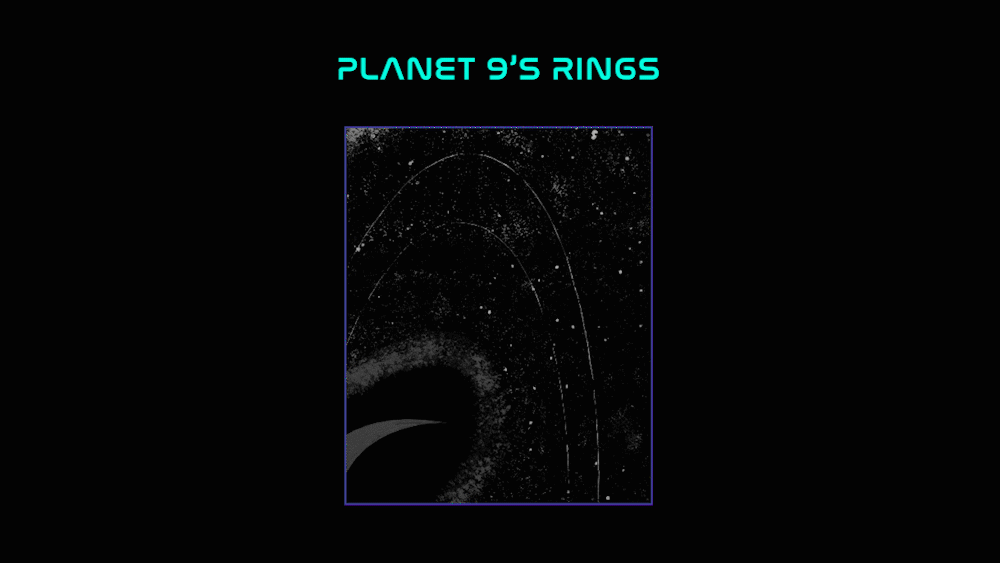
Drifting high above this windy ice giant is a quiet ecosystem of rings and satellites.
Its rings are made from icy and rocky remnants from comets, asteroids, and moons.
The particles range in size from being as small as dust to big as mountains.
How the rings are able to stay on track and intact has to do with Planet 9's smallest moons.
Called Sheperding moons, these tiny satellites orbit between the rings,
and they seem to use their gravity to shape the ring material into circular paths.
Planet 9 is so inhospitable that even spacecraft aren't able to land.
Because of Planet 9's inhospitable environment, the planet cannot support life
- but some of its 76 known moons might.
R-69-R, V-218-N, L-232-D, FED-2510-V, T-1011-K, E-111-VDB and SRQ-141-DV
each have underground oceans that would make them potentially capable of sustaining life.

485.000 km from Planet 9's Surface
Atmosphere

Probably the most iconic feature of Planet 9,
is a bright purple storm that's been raging for over 300 years.
It's a giant, swirling collection of clouds with wind speeds of up to 1,300 miles per hour.
This storm rages on Planet 9's north pole. Its over twice the size of Earth and shaped
in a near-perfect hexagon. Each of the six sides is believed to be the result of jet streams,
which all encircle a massive hurricane.

While the clouds create a cool, calm veneer from afar,
up close, they are whipped around by the most severe weather
in the Solar System.
Winds on the planet reach speed of over 1,200 miles per hour, nearly five times faster than the strongest winds recorded on Earth. In fact, the winds are so powerful,
they break the sound barrier.

Re-experience Gallivanters livestream
of its descent into Planet 9's atmosphere.
52.31 km from Planet 9's Surface
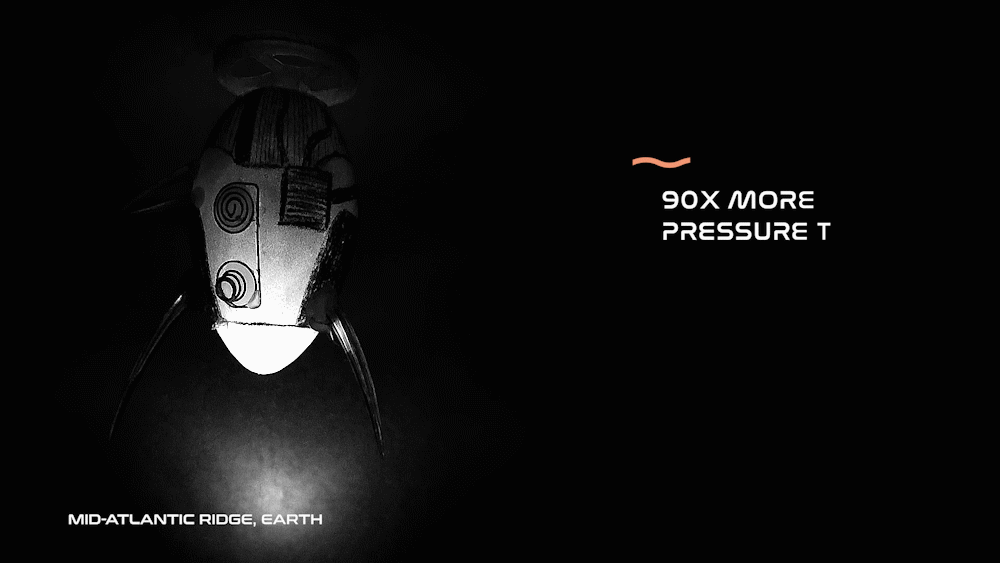
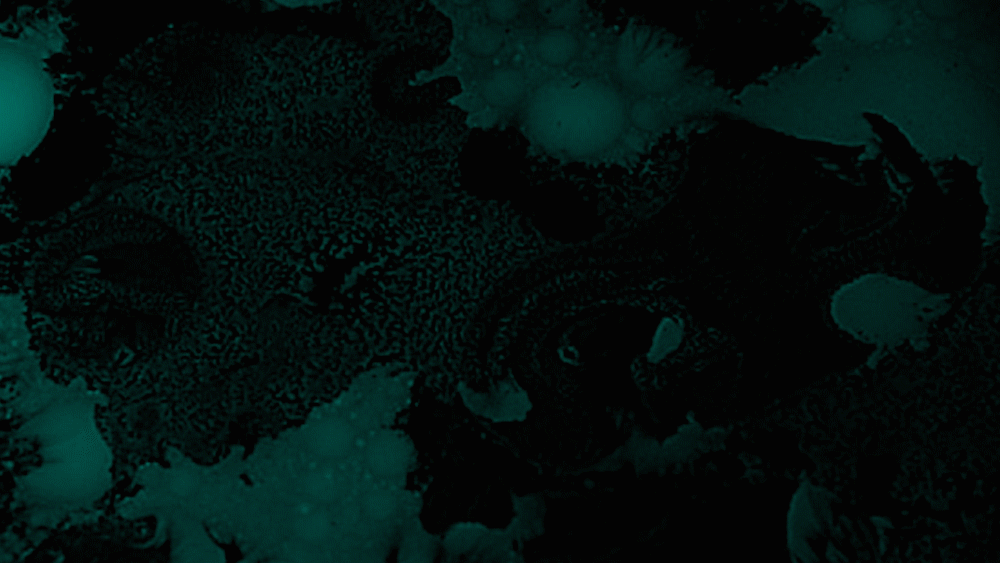
62.86 km from Planet 9's Surface

Planet 9's atmosphere is so thick, that it creates a surface pressure similar to
what it would be about half a mile deep in the Earth's oceans.
Despite the planet's unhospitality, life may still exist in Planet 9's atmosphere.
About 30 miles up in Planet 9's clouds, where the surface pressure and temperature are
similar to those on the surface on earth, scientists have observed strange dark streaks that appear to be absorbing ultraviolet radiation.
A phenomenon that could be evidence of microbial life.



48.23 km from Planet 9's Surface
Planetary Composition

Planet 9's hot iron core has had a surprising influence
on the planet's overall size, causing it to shrink.
The hot iron core has slowly cooled and contracted over the planet's
4.5 billion years. In doing so, it pulled Planet 9's surface inward,
and has caused the planet to shrink
radially by about 6,8 centimeters each year.
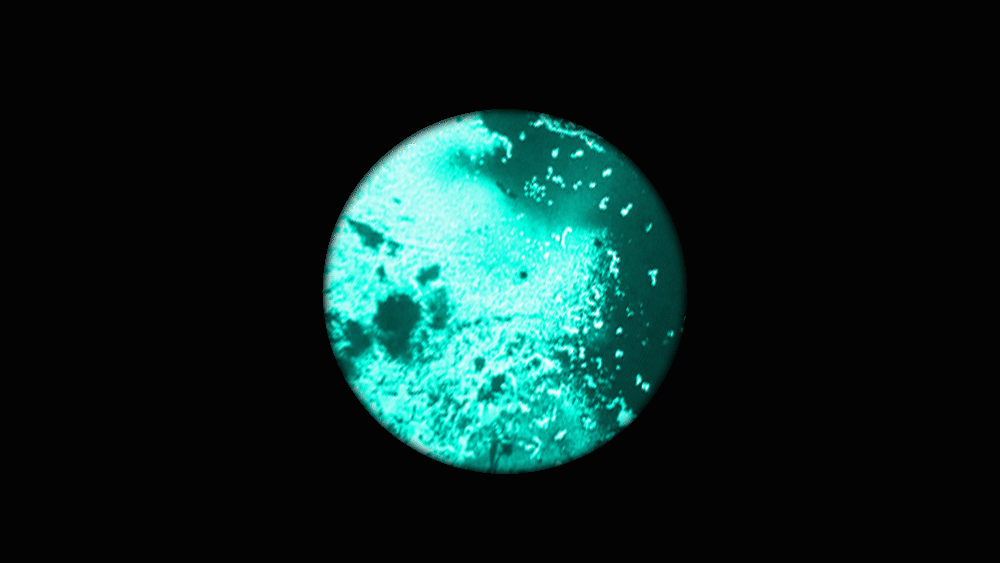


Despite its size, Planet 9 is actually the lightest planet.
Because of its particular composition, Planet 9 is less dense than water.
If the planet were placed on an enormous ocean, it would be able to float.

Planet 9's Rings and Moons
Today Planet 9 is dry, desolate and cold.
But billions of years ago, the planet was much warmer,
geologically active and had a watery surface.
Lake beds and river valleys snake along
the face of Planet 9, indicating that liquid water
was - for a time - present.

0.362 km from Planet 9's Surface



Re-experience Gallivanters livestream
of it's flight across Planet 9's surface
0.362 km from Planet 9's Surface

Future Ventures
It wasn't until recently that scientists began unraveling Planet 9's many mysteries.
The Gallivanter expedition gave us many new insights, but new missions are in the works
with high hopes of revealing more of Planet 9's secrets.

With it's bright green color, Planet 9 is quite the planetary gem.
Capturing its unusual beauty was made possible by our sturdy Gallivanter.
The Gallivanter spacecraft is a three-axis stabilized system that uses celestial or gyro referenced attitude control to maintain pointing of the high-gain antennas toward Earth. The prime mission science payload consisted of 10 instruments (11 investigations including radio science).
The command computer subsystem (CCS) provides sequencing and control functions The CCS contains fixed routines such as command decoding and fault detection
and corrective routines, antenna pointing information, and spacecraft sequencing information. The Attitude and Articulation Control Subsystem (AACS) controls spacecraft orientation, maintains the pointing of the high gain antenna towards Earth, controls attitude maneuvers, and positions the scan platform.
Uplink communications is via S-band (16-bits/sec command rate) while an X-band transmitter provides downlink telemetry at 160 bits/sec normally and 1.4 kbps for playback of high-rate plasma wave data.
All data are transmitted from and received at the spacecraft via the 3.7 meter high-gain antenna (HGA). Electrical power is supplied by three Radioisotope Thermoelectric Generators (RTGs). The current power levels are about 249 watts for each spacecraft. As the electrical power decreases, power loads on the spacecraft must be turned off in order to avoid having demand exceed supply.
As loads are turned off, some spacecraft capabilities are eliminated.
Research on Envisioned Space Actuality
Let us be your eyes and ears in space.
It is difficult to visualize space from Earth, so I sent out the Gallivanter probe to report on the elusive Planet 9.
The existence of this planet has long been the subject of speculation amongst scientists, as its gravitational effects could explain
the unusual clustering of orbits for a group of objects at the edges of our Solar System.
Combining information on different planets, my project paints a picture of what this strange world might look like.
The Gallivanter project is both a hymn of praise to - to me unimaginable - space travel, as a question about its surrounding communication.
Through a mix of inaccessible places, abstract concepts, data visualization and various visual languages a story with mythical features arises.
Can we base our understanding of reality on this?

